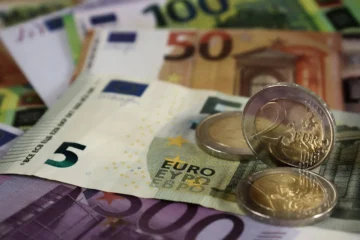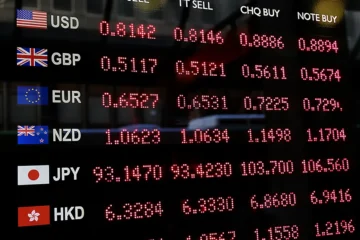US
The week just ended has led losses to US equity indices: the S&P 500 fell 2.16% to 2,743, thus failing to break the resistance line at 2,800-2,815. Similarly, the NASDAQ lost 2.46% and the Dow Jones decreased by 1.80%.
This week has not brought major news for what concerns the US-China trade talks after the deadline for the imposition of new tariffs has been moved from March 1 to the end of the month. However, senior US officials have been reported saying that there is still “work left to be done” and Trump is prepared to “walk away” from a non-satisfactory deal.
On Wednesday, crude oil inventories data caught the market by surprise and went above estimates, with a more-than-expected buildup in inventories. WTI fell 0.60% on the day but it was up 0.48% for the week to $56.07/bbl.
On Friday some key figures were published: the nonfarm payrolls increased by just 20,000 against expectations of 180,000, while the unemployment rate fell to 3.8%, its cyclical low, and the wage growth came up at a 10-year high of 3.4%. Such figures are likely to weigh on corporate margins, as labor costs increase and the economic growth cools down. Wall Street equity research analysts are now expecting US corporate earnings to stay largely flat for the first 6-9 months of the year and to turn to higher growth just in the last quarter.
On the same day, the Fed governor Jerome Powell gave a speech saying how he sees no signs that the current monetary policies need to be changed to help the US economy and that the Fed was “well along” in plans to end its balance sheet runoff in late 2019, making sure to work cautiously in order not to disrupt markets. Such statements made markets think that the wait-and-see approach currently in place could continue in the short-term. The US 1-year T-Bill yield was down to 2.54% as of Friday closing price, while for the 10-year Treasury it closed at 2.63%.
REST OF THE WORLD
The main impulses came from China this past week. The country is preparing for a continued slowdown as Chinese Premier Li Keqiang announced plans to reduce taxes by 2 trillion yuan in 2019 to get a grip on the tough economic conditions ahead for his country. China is targeting GDP growth in the range of 6% to 6.5% in 2019 – the weakest in 28 years.
But China is not the only country facing continued economic slowdown. On Wednesday, the OECD lowered growth estimates for the global economy from 3.5% to 3.3% for 2019. The downward revisions was most notable for Turkey which GDP is expected to decline by 1.8% in 2019. The OECD warned that further trade restrictions and policy uncertainty could put global growth under further pressure. The trade conflict between China and the US showed first effects on China’s trade balance. The country’s trade surplus with the U.S. in the first two months of the year increased by 3.9% to 290.09 billion yuan. China’s foreign trade surplus dropped 84% year over year in February to 34.46 billion yuan, mainly on the back of a slowdown in production due to Chinese New Year.
On Friday, the Shanghai SE Composite gave up almost all of its gains over the past week by dropping 4.4% to close at 2.969.86.
Hong Kong’s Hang Seng closed 28,228 points on Friday, down 1.91% on the week. Notable exception from the down trend was Tencent Holdings Ltd.’s shares, which surged 4.21% on Tuesday, following news that the company was among the short-listed bidders for a controlling stake in game developer Nexon Co. Ltd.
Elsewhere, the Bank of Canada stroke a dovish tone on Wednesday (leaving the benchmark rate unchanged at 1.75%) on future rate moves amid possible weaker-than-expected domestic growth in the first half, sending the Loonie to a two month low. The Australian dollar fell 0.78% against its U.S. counterpart on Wednesday after the Australian economy grew less than expected in the last quarter of 2018 – on the week the Aussie Dollar lost 1.4% to US Dollar, closing at 0.71 USD/AUD.
The concerns on the global economic slowdown showed there effects also on oil prices, sending both Brent and WTI Crude down by around 1% on Friday, closing at $65.74/Barrel $56.07/Barrel, respectively. Gold advanced 1.03% to $1,299.30 per ounce.
EUROPE
The most important event of this week in European financial market was ECB monetary policy decisions unveiled on Thursday. The ECB slashed by 0.6% growth forecasts for Eurozone countries (1.1% vs 1.7%), giving a more dovish tone to its monetary policy guidance. Concerns about growth led Mario Draghi to take a step back from policy tightening initiatives, signaling that interest rates would not rise in 2019, while he had previously hinted at 2019 summer as the earliest time for policy tightening.
The ECB also extended the TLTRO program, through which the central bank provides cheap credit to the continent’s banks encouraging them to lend to the real economy. In recent years the ECB has pumped €700bn into eurozone banks’ balance sheets via TLTRO and 55% of the stimulus went to Italian and Spanish banks.
Gloomy growth forecasts weighted on European stocks: during the week, the French CAC40 tumbled 0.64%, the Spanish IBEX35 lost 1.49% and the Italian FTSEMIB fell 1.02%. The DAX closed at 11,457.84 losing 1.24% during the week. On the bad performance of German equities weighted the disappointing German industrial orders data for January realized on Friday, giving a further confirmation of a German slowdown, with domestic and foreign orders both declining.
The European investors risk-off mode lift up haven assets. The German 10Y Bund yield closed at 0.07% on Friday with a two-day decline of 10bps. Italian sovereign debt also attracted investors, with the Italian 10Y BTP yield closing at 2.50%, a level last seen in July.
The dovish statements of the ECB hit the euro with the EURUSD exchange rate touched a 20-month low at 1.1235.
UK
The risk-off mode of European markets this week was reflected in UK as well, with UK 10y Guilt yield closing at 1.19% down from 1.30% of last week and the FTSE100 remaining flat at 7,104.31.
The pound weakened against the US dollar on the back of lower UK yields and doubts over the passage of a Brexit deal through Parliament. The GBPUSD exchange rate closed at 1.3015, down from 1.3202 of last Friday.
Next week will be very intense in political arena since the UK Parliament will finally decide on Brexit. Decisions will likely affect UK financial markets as well. On Tuesday, MPs will vote over the revised Brexit deal. An approval would pave the way to an orderly Brexit. If the deal is defeated, MPs will be invited to vote on Wednesday on whether the UK should leave the EU without a deal. Since the hard Brexit is the worst case scenario, MPs are expected to vote against a no deal. In this case, on Thursday, MPs will vote on Article 50 extension, seeking to delay Brexit.
The BoE warned against significant market volatility in case of no-Brexit. The BoE announced the launch of weekly auctions of euros to ensure banks do not run out of cash. This scheme complements the already existing dollar facilities and is intended to ensure financial stability in a worst-case scenario.



0 Comments